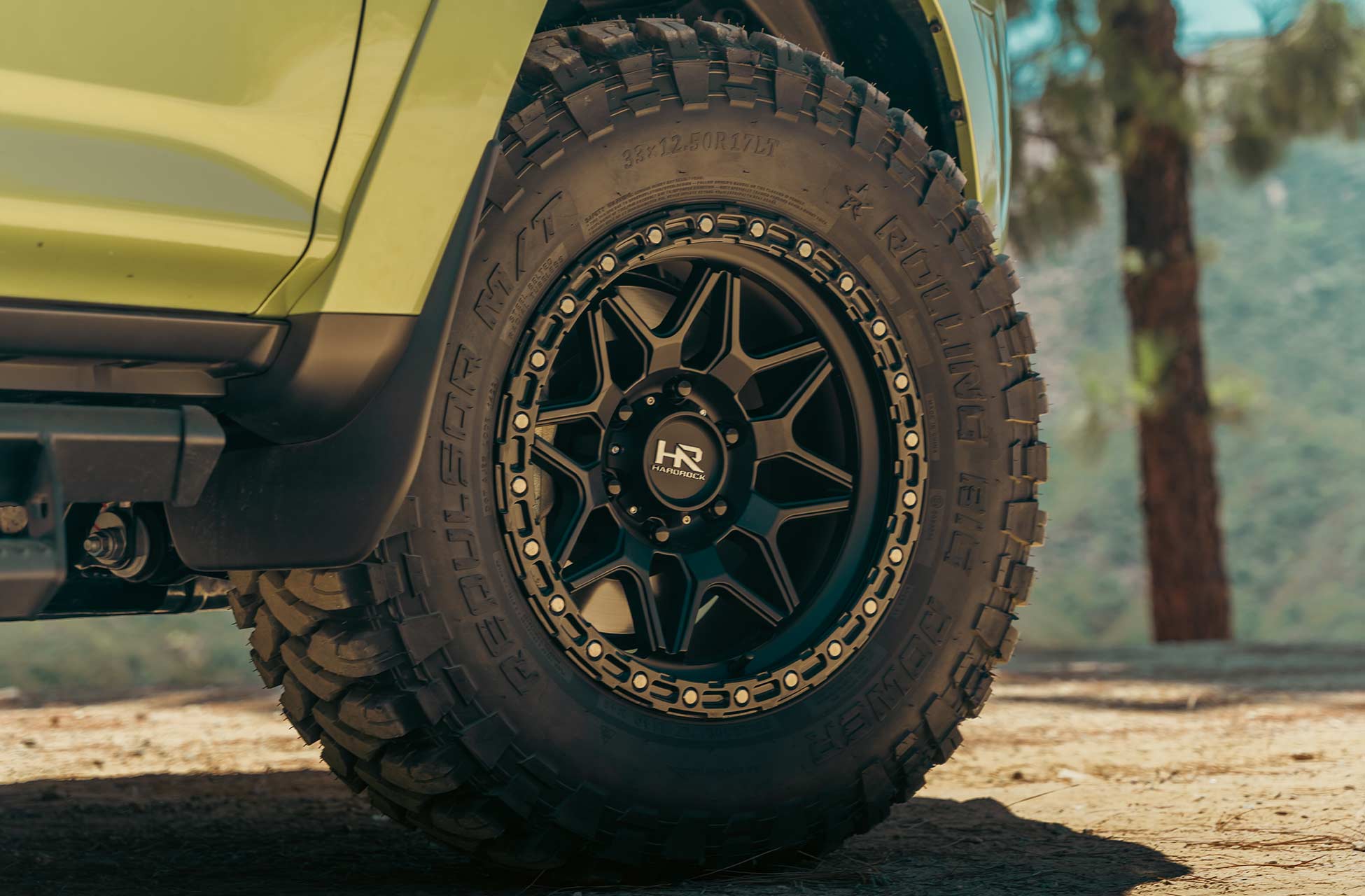If you’re in the off-roading scene, chances are you’ve heard of or seen beadlock off road wheels. Yes, beadlock wheels look cool and all the hardcore trail rigs are running them; but why? The bigger questions loom in the background. Do you need beadlock off road wheels? Are they safe? What are the benefits of a beadlock versus a non-beadlock? As trail junkies ourselves, we get this question often. At HardRock Offroad, we’ve had tons of testing done not only from a manufacturing standpoint, but from individual experiences on and off the dirt, sand and mud. Let’s take a deeper look into beadlocks and what they’re all about.

The Truth About Beadlock Wheels
What Are Beadlock Wheels?
In short, beadlock wheels do exactly what the name suggests: they lock the tires bead to the wheel. Originally, this type of wheel was used in military applications, but later popularized by the off-road and rock-crawling communities. The purpose a beadlock originally served was to prevent wheels from dismounting when placed under massive amounts of torque load and lower-than-normal tire pressures.
So why do off-road guys run beadlocks then? Well, the answer is pretty simple. It’s common for off-roaders to air-down tires to increase ride quality and performance on the trail. This makes navigating through sand, mud, dirt and rocks much easier compared to a fully pressured tire. However, there are risks associated with doing so. With factory wheels and non-beadlock off-road style wheels, you can drop tire pressure down to roughly 12-16 psi safely without worrying about the bead of the tire dislodging from the wheel. On a true beadlock wheel, you can go as low as 5-7 psi without having de-beading issues.

Beadlock vs. Non-Beadlock Wheels
You’re probably wondering how a beadlock and non-beadlock wheel stack up against each other. The truth is, they both have their benefits and it completely depends on what your use-case actually is. However, there are a few important things to consider before committing to a particular set of wheels. Unless you plan to take on the most difficult trails, beadlock wheels are not a must-have item on your off-road rig. It’s important to note that these types of wheels are not only relatively expensive, most if not all are not DOT (Department of Transportation) legal and approved. That means you cannot legally drive your rig on the street or highway with them installed.
In addition, beadlock wheels are heavier, harder to balance, and have an increased chance of beadlock bolts breaking which can cause major issues in on-road use if not installed and torqued down correctly. On the flip side, many manufacturers, including HardRock Offroad, offer off road wheels with the beadlock styling that are totally safe for on-road and off-road use.

Pros & Cons of Beadlock Wheels
Pros
- The capability to air-down tire pressure to 5-7 psi giving better traction in sand, snow, rocks, and more.
- Beadlock wheel rims are relatively stronger and can take a beating while in intense off-road situations.
- They look pretty damn cool.
Cons
- Beadlock wheels are heavy due to more metal and equipment being used.
- In most cases, beadlocks are not legal for on-road use because of DOT regulations. Because of this, there’s a possibility of damage and tire blowout, which can lead to serious safety issues on the road.
- The cost of such wheels are higher because of the use of extra materials, parts and engineering.
- Most tire tire shops won’t entertain a beadlock wheel balancing job due to legal reasons, leaving you to figure it out on your own.
In the end, it boils down to what your intentions are with your rig and what you feel is right for you. Always remember to consider the risks and liability that comes from improper use and incorrect installation of bolts and wheels.



